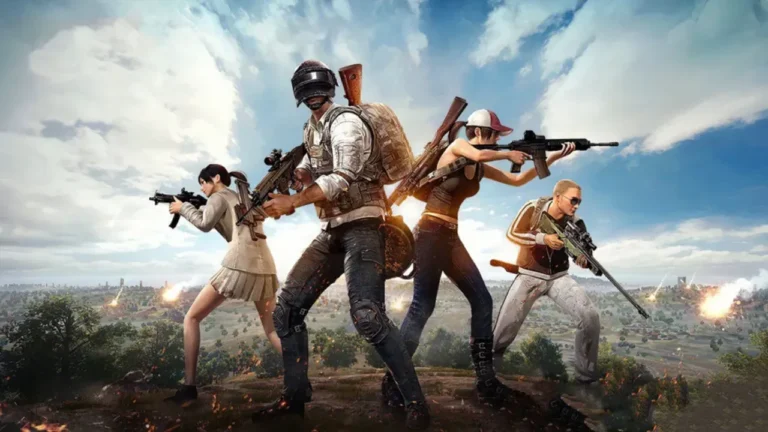If you want to drop into Erangel or Miramar without your frame rate crawling through the mud, your setup needs to keep up. Whether you play PUBG Mobile on PC or through an emulator, here’s exactly what kind of mobile and PC hardware you’ll need to get better FPS and good performance.
PUBG Mobile System Requirements (Android & iOS)
PUBG Mobile is still surprisingly scalable, but the difference between a budget phone and a mid-tier or flagship device is night and day.
Minimum Specifications
- Android: 5.1.1 or later, 2 GB RAM, Snapdragon 425 (or similar)
- iOS: iOS 9+, iPhone 5s / iPad Mini 2 or above
- Storage: 4 GB free (and growing with each update)
You can technically play on these specifications, but expect long loading times and rough frame drops in the busy fights. Hot zones, such as School or Bootcamp, will be around 30–40 FPS at best.
Recommended Specifications
- Android: Android 10+, Snapdragon 680 or better, 4 GB+ RAM
- iOS: iOS 11+, iPhone 8 or above
- Storage: Around 10–20 GB once all resource packs are downloaded
This setup gives you a steady 40–60 FPS and smooth TDM or Classic matches — good enough to win close-range fights without your screen freezing mid-spray.
For Ultra or HDR Extreme Settings
- Android: Snapdragon 8 Gen 2+, 6 GB+ RAM
- iOS: iPhone 13 Pro / iPhone 14 or above
- Display: 120 Hz supported
- Storage: 25 GB+ (HD textures, maps, and voice files)
If you want to achieve HDR graphics with an “Extreme” frame rate, only high-quality phones can handle that comfortably.
PUBG Mobile on PC (Emulator Requirements)
Many players prefer mouse and keyboard thanks to better controls than any other gaming setup, and emulators like Gameloop, BlueStacks, or LDPlayer make it possible, but the smoother the emulator, the more power your PC demands from hardware.
Minimum Specifications
- OS: Windows 7/8/10 (64-bit)
- CPU: Intel or AMD dual-core @ 1.8GHz
- RAM: 8 GB
- GPU: GTX 960 / AMD R7 370
- Storage: 5 GB+
Expect around 30 FPS on low settings. You’ll feel stutters while driving or when multiple air drops hit at once.
Recommended Specs (Good Gameplay)
- CPU: Intel i5-6600K / Ryzen 5 1600
- GPU: GTX 1060 (3 GB) / RX 580 (4 GB)
- RAM: 16 GB
- Storage: 20 GB+
- Internet: At least 10 Mbps stable
This setup gives consistent frame pacing even in late-game circles, with minimal input delay when flicking or tracking enemies. Great balance for emulator players.
PUBG PC (Steam Edition) Requirements
PUBG’s full PC version is heavier than Mobile or emulators, but it gives you better gunplay, quality graphics, and 144 Hz potential if your rig can handle it.
Minimum Specifications (Playable, Not Competitive)
- OS: Windows 10 (64-bit)
- CPU: Intel i5-4430 / AMD FX-6300
- GPU: GTX 960 / R7 370 (2 GB VRAM)
- RAM: 8 GB
- Storage: 40 GB
- DirectX: Version 11
This will get you through casual matches at 40 FPS tops, but you’ll be fighting frame dips harder than players.
Recommended Specifications (Smooth 60 FPS+)
- CPU: i5-6600K / Ryzen 5 1600
- GPU: GTX 1060 (3 GB) / RX 580 (4 GB)
- RAM: 16 GB
- Storage: 50 GB
You’ll easily hit stable 60 FPS and maintain clarity during fast scopes or sprays.
For Competitive or 144Hz Gameplay
- CPU: i9-9900K / Ryzen 7 3800X
- GPU: RTX 2060 Super / RX 5700
- RAM: 32 GB
- Display: 144 Hz G-Sync / FreeSync
- Internet: Wired recommended — Wi-Fi spikes ruin final circles
If you’re chasing the buttery 144 FPS and zero input lag, this is the sweet spot.
Final Word
For now, PUBG demands more than it used to. The days of running it on 2 GB RAM are long gone. For PUBG Mobile, you’ll want at least 4 GB of RAM to survive intense surroundings with a lot of objects around. For emulator or PC play, pair a GTX 1060 with 16 GB RAM — that combo still holds strong.
And remember, specs help, but a stable internet connection matters more than raw power for online multiplayer. Even an RTX 4090 can’t save you from packet loss during a 1v4.

